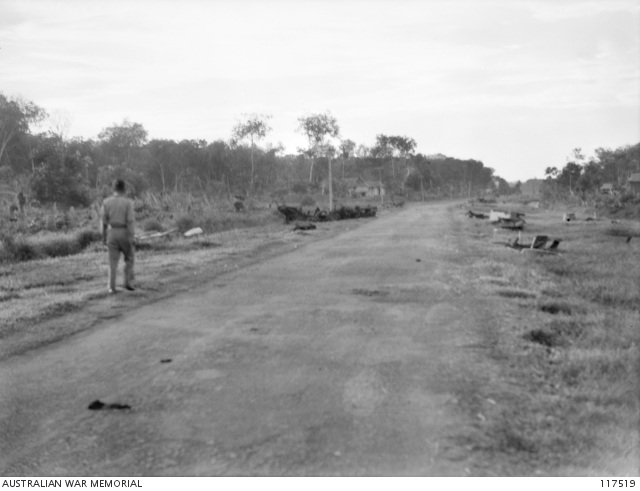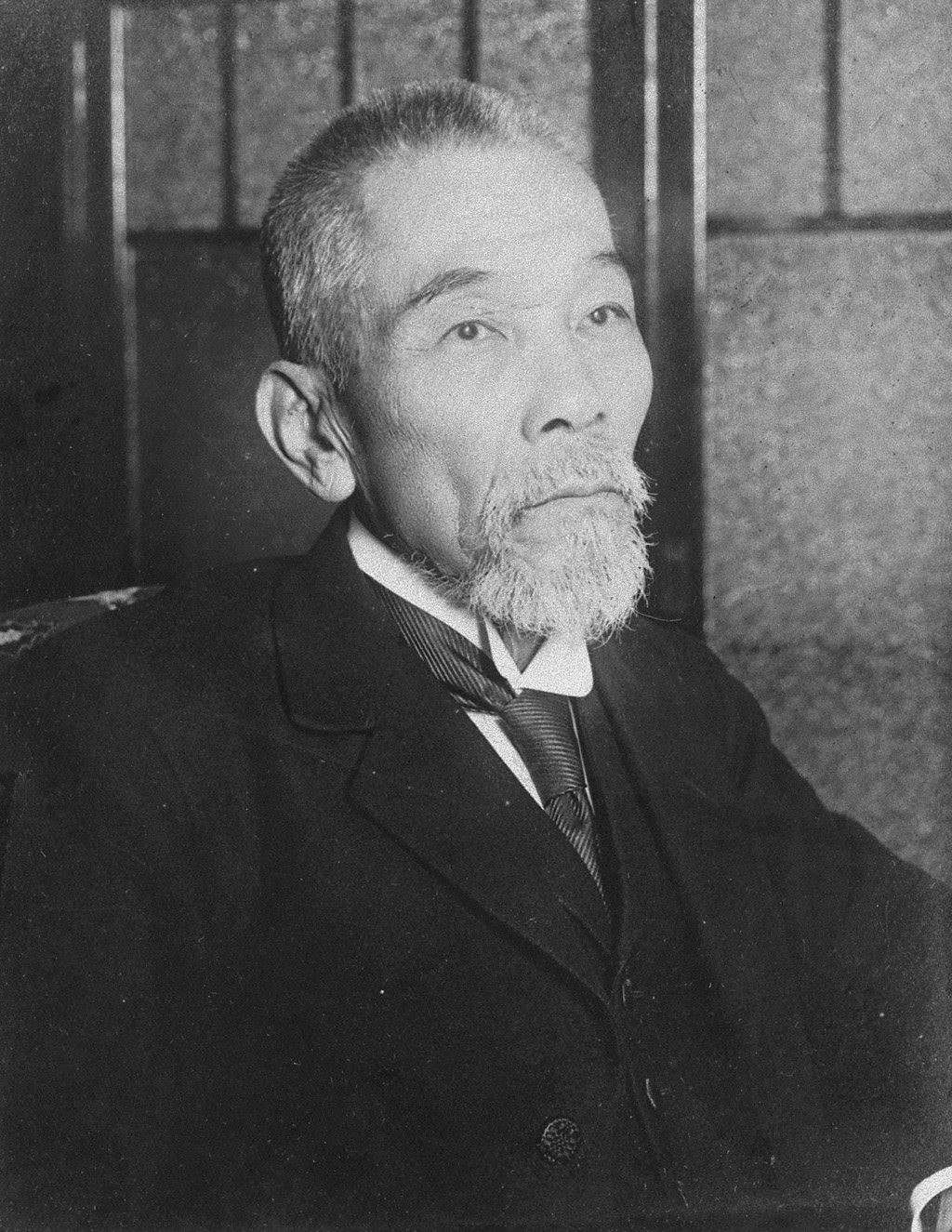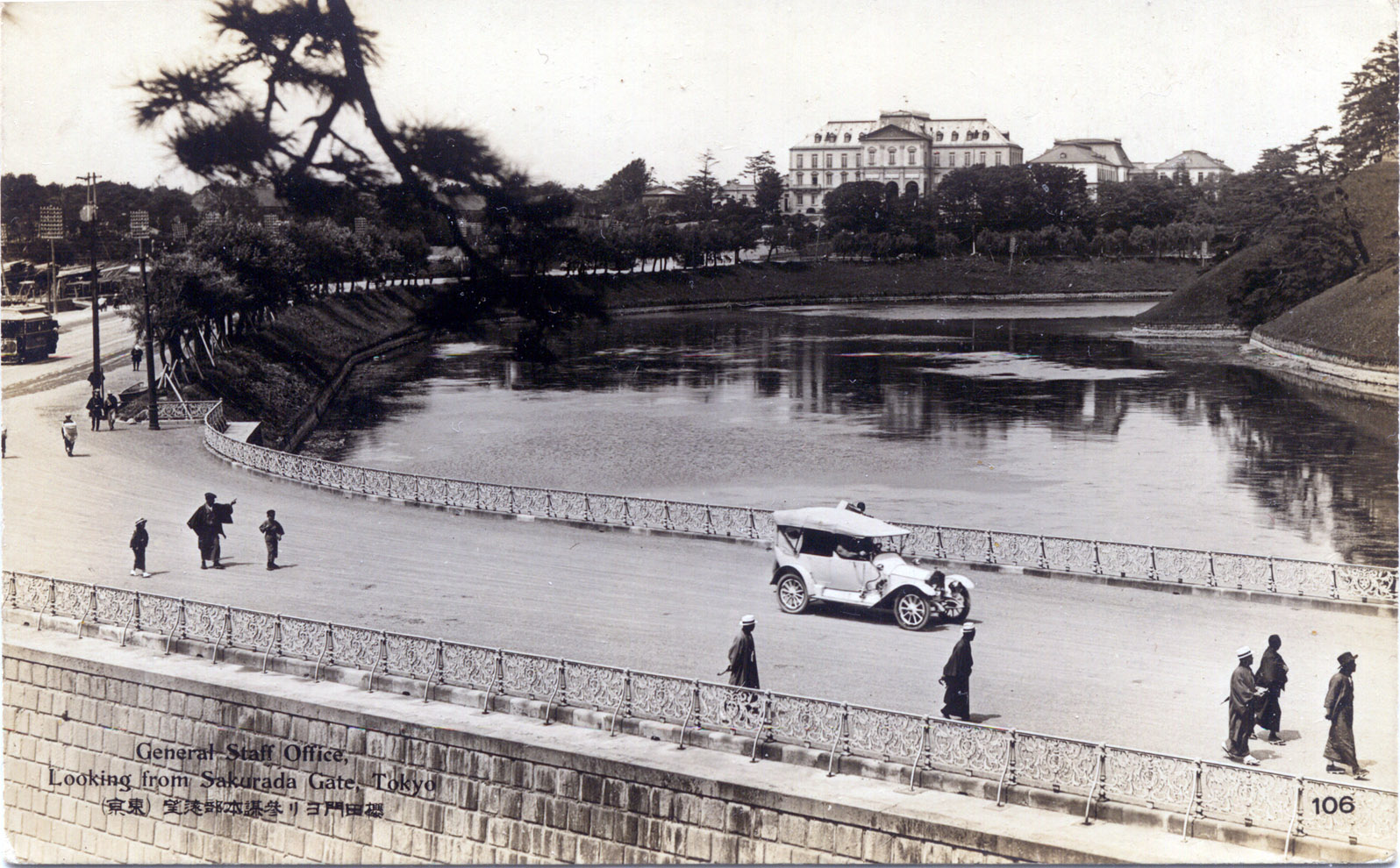|
Takuma Nishimura
was a Japanese army general in the Imperial Japanese Army during World War II, active in the invasion and occupation of British Malaya. After the Japanese surrender, he was tried and convicted in British Singapore as a war criminal for his role in the Sook Ching massacres. After four years imprisonment he was handed to Australian authorities for trial on the Parit Sulong Massacre and executed by hanging by the then Australian Territory of Papua and New Guinea. Early military career A native of Fukuoka prefecture, Nishimura was a graduate of the 22nd class of the Imperial Japanese Army Academy in 1910, and subsequently attended Army Engineering School. He graduated from the 32nd class of the Army Staff College in 1920. He served most of his career in various staff and administrative posts within the Imperial Japanese Army General Staff. Nishimura served as presiding judge at the court-martial of army officers responsible for the assassination of Prime Minister Inukai Tsuyoshi ... [...More Info...] [...Related Items...] OR: [Wikipedia] [Google] [Baidu] |
Fukuoka Prefecture
is a Prefectures of Japan, prefecture of Japan located on the island of Kyūshū. Fukuoka Prefecture has a population of 5,109,323 (1 June 2019) and has a geographic area of 4,986 Square kilometre, km2 (1,925 sq mi). Fukuoka Prefecture borders Saga Prefecture to the southwest, Kumamoto Prefecture to the south, and Ōita Prefecture to the southeast. Fukuoka is the capital and largest city of Fukuoka Prefecture, and the largest city on Kyūshū, with other major cities including Kitakyushu, Kurume, and Ōmuta, Fukuoka, Ōmuta. Fukuoka Prefecture is located at the northernmost point of Kyūshū on the Kanmon Straits, connecting the Tsushima Strait and Seto Inland Sea across from Yamaguchi Prefecture on the island of Honshu, and extends south towards the Ariake Sea. History Fukuoka Prefecture includes the Old provinces of Japan, former provinces of Chikugo Province, Chikugo, Chikuzen Province, Chikuzen, and Buzen Province, Buzen. Shrines and temples Kōra taisha, Sumiyoshi-jinja, ... [...More Info...] [...Related Items...] OR: [Wikipedia] [Google] [Baidu] |
Parit Sulong Massacre
On 22 January 1942, the Parit Sulong Massacre in Johor, Malaya (now Malaysia) was committed against Allied soldiers by members of the Imperial Guards Division of the Imperial Japanese Army. A few days earlier, the Allied troops had ambushed the Japanese near Gemas and blown up a bridge there. Incident During the Battle of Muar, members of both the Australian 8th Division and the 45th Indian Infantry Brigade were making a fighting withdrawal, when they became surrounded near the bridge at Parit Sulong. They fought the larger Japanese forces for two days, until they ran low on ammunition and food. Able-bodied soldiers were ordered to disperse into the jungle, the only way they could return to Allied lines. About 150 Australians and Indians were too seriously injured to move, and their only option was to surrender. Some accounts estimate that as many as 300 Allied troops were taken prisoner at Parit Sulong. The Imperial Guards kicked and beat the wounded prisoners of war with the ... [...More Info...] [...Related Items...] OR: [Wikipedia] [Google] [Baidu] |
Battle Of Malaya
The Malayan campaign, referred to by Japanese sources as the , was a military campaign fought by Allied and Axis forces in Malaya, from 8 December 1941 – 15 February 1942 during the Second World War. It was dominated by land battles between British Commonwealth army units and the Imperial Japanese Army, with minor skirmishes at the beginning of the campaign between British Commonwealth and Royal Thai Police. The Japanese had air and naval supremacy from the opening days of the campaign. For the British, Indian, Australian, and Malayan forces defending the colony, the campaign was a total disaster. The operation is notable for the Japanese use of bicycle infantry, which allowed troops to carry more equipment and swiftly move through thick jungle terrain. Royal Engineers, equipped with demolition charges, destroyed over a hundred bridges during the retreat, yet this did little to delay the Japanese. By the time the Japanese had captured Singapore, they had suffered 9,657 cas ... [...More Info...] [...Related Items...] OR: [Wikipedia] [Google] [Baidu] |
Imperial Guard Of Japan
In Japan, the Imperial Guard is the name for two separate organizations dedicated to the protection of the Emperor of Japan and the Imperial Family, palaces and other imperial properties. The first was the , a quasi-independent elite branch of the Imperial Japanese Army which was dissolved shortly after World War II. The second is the , a civilian law enforcement organization formed as part of the National Police Agency.(警察庁) Imperial Guard of the Imperial Japanese Army The Imperial Guard of the Imperial Japanese Army was formed in 1867. It became the foundation of the Imperial Japanese Army after the Emperor Meiji assumed all the powers of state during the Meiji Restoration. The Imperial Guard, which consisted of 12,000 men organized and trained along French military lines, first saw action in the Satsuma Rebellion. It was organized into the 1st Guards Infantry Brigade which had the 1st and 2nd Regiments. The 3rd and 4th Regiments belonged to the 2nd Guards Infantry B ... [...More Info...] [...Related Items...] OR: [Wikipedia] [Google] [Baidu] |
Invasion Of French Indochina
The was a short undeclared military confrontation between Empire of Japan, Japan and Vichy France, France in northern French Indochina. Fighting lasted from 22 to 26 September 1940; the same time as the Battle of South Guangxi in the Second Sino-Japanese War, Sino-Japanese War, which was the main objective as to why Japan occupied Vietnam during this time. The main objective of the Japanese was to prevent Republic of China (1912-1949), China from importing arms and fuel through French Indochina along the Kunming–Haiphong railway, from the Indochinese port of Haiphong, through the capital of Hanoi to the Chinese city of Kunming in Yunnan. Although an agreement had been reached between the French and Japanese governments prior to the outbreak of fighting, authorities were unable to control events on the ground for several days before the troops stood down. As per the prior agreement, Japan was allowed to occupy Tonkin in northern Indochina, and thus effectively blockade Chi ... [...More Info...] [...Related Items...] OR: [Wikipedia] [Google] [Baidu] |
Major General
Major general (abbreviated MG, maj. gen. and similar) is a military rank used in many countries. It is derived from the older rank of sergeant major general. The disappearance of the "sergeant" in the title explains the apparent confusion of a lieutenant general outranking a major general, whereas a major outranks a lieutenant. In the Commonwealth of Nations, Commonwealth and in the United States, when appointed to a field command, a major general is typically in command of a Division (military), division consisting of around 6,000 to 25,000 troops (several regiments or brigades). It is a two-star general, two-star rank that is subordinate to the rank of lieutenant general and senior to the rank of brigadier or brigadier general. In the Commonwealth, major general is equivalent to the navy rank of rear admiral. In air forces with a separate rank structure (Commonwealth), major general is equivalent to air vice-marshal. In some countries including much of Eastern Europe, major ... [...More Info...] [...Related Items...] OR: [Wikipedia] [Google] [Baidu] |
Chief Of Staff (military)
The title chief of staff (or head of staff) identifies the leader of a complex organization such as the armed forces, institution, or body of persons and it also may identify a principal staff officer (PSO), who is the coordinator of the supporting staff or a primary aide-de-camp to an important individual, such as a president, or a senior military officer, or leader of a large organization. In general, a chief of staff provides a buffer between a chief executive and that executive's direct-reporting team. The chief of staff generally works behind the scenes to solve problems, mediate disputes, and deal with issues before they are brought to the chief executive. Often chiefs of staff act as a confidant and advisor to the chief executive, acting as a sounding board for ideas. Ultimately the actual duties depend on the position and the people involved. Civilian Government Brazil *Chief of Staff of the Presidency Canada * Chief of Staff to the Prime Minister *Principal Sec ... [...More Info...] [...Related Items...] OR: [Wikipedia] [Google] [Baidu] |
Inukai Tsuyoshi
Inukai Tsuyoshi ( ja, 犬養 毅, 4 June 1855 – 15 May 1932) was a Japanese politician, cabinet minister, and Prime Minister of Japan from 1931 to his assassination in 1932. Inukai was Japan's second oldest prime minister while serving, as he was aged 76 on the day he was murdered, after Kantarō Suzuki (at aged 77). Early life Inukai was born to a samurai family of Niwase Domain, in Niwase village, Bizen Province (now part of Okayama city, Okayama Prefecture), where his father had been a local official and magistrate under the Tokugawa shogunate. In 1876, Inukai travelled to Tokyo and subsequently graduated from the Keio Gijuku (now Keio University) where he specialized in Chinese studies. In his early career, Inukai worked as a journalist for the ''Yūbin Hōchi Shimbun'' (now a sports newspaper subsidiary of the ''Yomiuri Shimbun'') and ''Akita Sakigake Shimpō''. He went with the Imperial Japanese Army to the front during the Satsuma Rebellion as a reporter. Political ... [...More Info...] [...Related Items...] OR: [Wikipedia] [Google] [Baidu] |
Prime Minister Of Japan
The prime minister of Japan (Japanese: 内閣総理大臣, Hepburn: ''Naikaku Sōri-Daijin'') is the head of government of Japan. The prime minister chairs the Cabinet of Japan and has the ability to select and dismiss its Ministers of State. The prime minister also serves as the civilian commander-in-chief of the Japan Self Defence Forces and as a sitting member of the House of Representatives. The individual is appointed by the emperor of Japan after being nominated by the National Diet and must retain the nomination of the lower house and answer to parliament to remain in office. The position and nature of this title allow the holder to reside in and work at the Prime Minister's Official Residence in Nagatacho, Chiyoda, Tokyo, close to the National Diet Building. Fumio Kishida is the current prime minister of Japan, replacing Yoshihide Suga on 4 October 2021. As of , there have been 102 prime ministers. Designation Abbreviations In Japanese, due to the special ... [...More Info...] [...Related Items...] OR: [Wikipedia] [Google] [Baidu] |
Court-martial
A court-martial or court martial (plural ''courts-martial'' or ''courts martial'', as "martial" is a postpositive adjective) is a military court or a trial conducted in such a court. A court-martial is empowered to determine the guilt of members of the armed forces subject to military law, and, if the defendant is found guilty, to decide upon punishment. In addition, courts-martial may be used to try prisoners of war for war crimes. The Geneva Conventions require that POWs who are on trial for war crimes be subject to the same procedures as would be the holding military's own forces. Finally, courts-martial can be convened for other purposes, such as dealing with violations of martial law, and can involve civilian defendants. Most navies have a standard court-martial which convenes whenever a ship is lost; this does not presume that the captain is suspected of wrongdoing, but merely that the circumstances surrounding the loss of the ship be made part of the official record. M ... [...More Info...] [...Related Items...] OR: [Wikipedia] [Google] [Baidu] |
Imperial Japanese Army General Staff
The , also called the Army General Staff, was one of the two principal agencies charged with overseeing the Imperial Japanese Army. Role The was created in April 1872, along with the Navy Ministry, to replace the Ministry of Military Affairs (''Hyōbushō'') of the early Meiji government. Initially, the Army Ministry was in charge of both administration and operational command of the Imperial Japanese Army however, from December 1878, the Imperial Army General Staff Office took over all operational control of the Army, leaving the Army Ministry only with administrative functions. The Imperial Army General Staff was thus responsible for the preparation of war plans; the military training and employment of combined arms military intelligence; the direction of troop maneuvers; troop deployments; and the compilation of field service military regulations, military histories, and cartography. The Chief of the Army General Staff was the senior ranking uniformed officer in the Imper ... [...More Info...] [...Related Items...] OR: [Wikipedia] [Google] [Baidu] |




